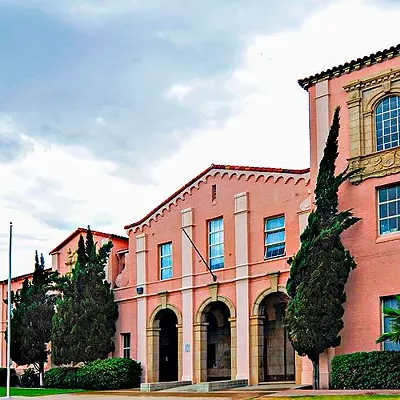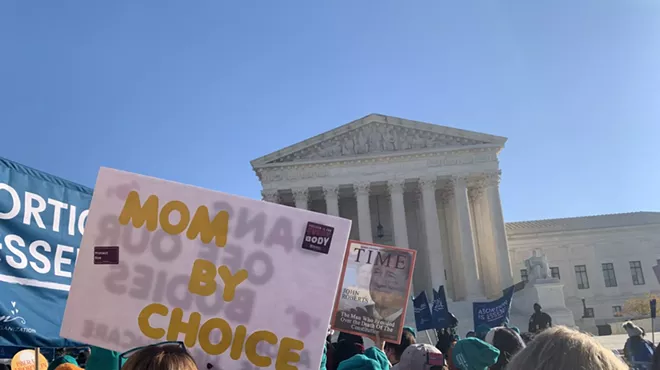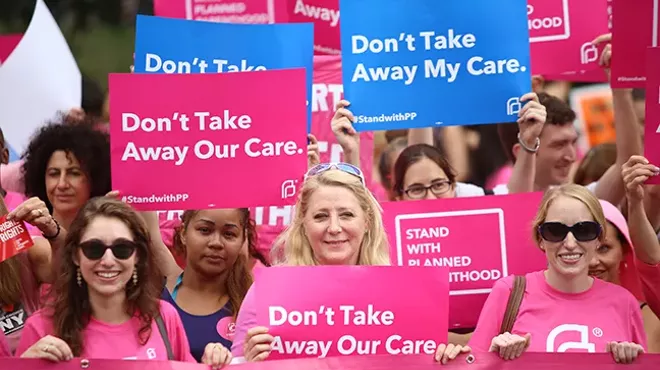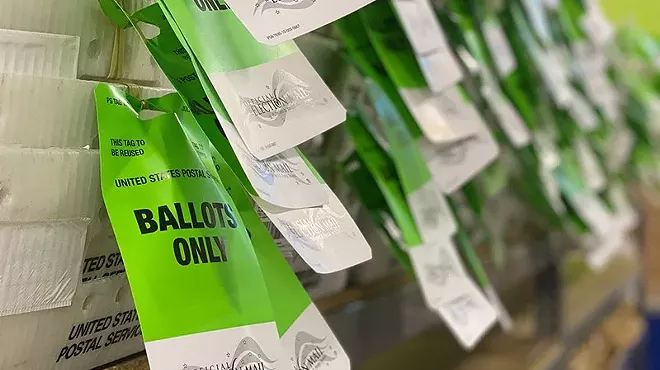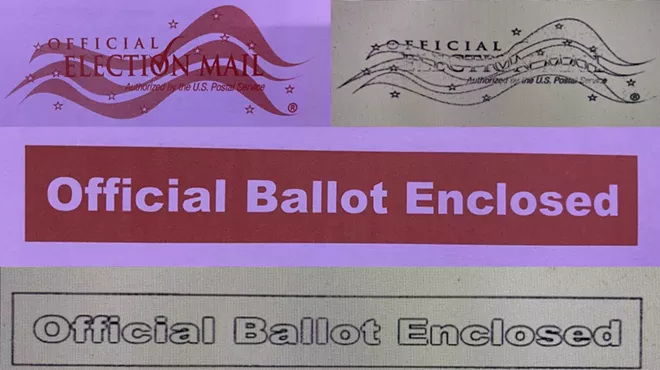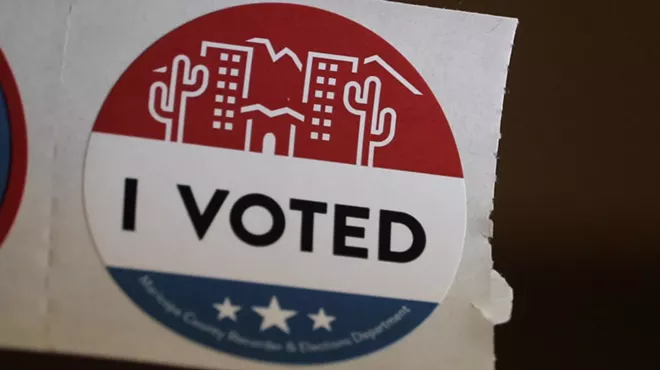Wednesday, March 16, 2016
Crunching University High Enrollment Numbers
In my last post, some comments about University High led me to look at how the school's total enrollment numbers have changed over the years, and that led me to look at changes in the school's ethnic balance. The TUSD website is a statistics-rich environment with detailed numbers about enrollment and attendance starting with the 1996-97 school year and continuing to the present, broken down by gender and ethnicity, school and grade. So I dug into the tables to see what I could find. Here are some stats, with a bit of analysis to follow.
• In 1996-97, UHS had 624 students. In 2013-14, it had 992 students.
• In 1996-97, 431 UHS students were Anglo (69.1 percent) and 111 were Hispanic (17.8 percent). In 2013-14, 493 were Anglo (49.7 percent) and 322 were Hispanic (32.5 percent).
No question, the total number of students at UHS went up over the years, even as the total TUSD student population dropped. The percentage of Hispanic students increased as well. But the district has a far larger percentage of Hispanic students now than in 1996. At the same time, more out-of-district students are attending UHS than previously. That's where the numbers start getting complicated. Basically, the ethnic balance at UHS has changed in pretty much the same way as the ethnic balance in the district, but the number of students who have come to UHS from outside the district has increased. I'll sort the various factors out as well as I can below.
By the way, none of what I'm writing is about the quality of UHS, its curriculum or anything like that. It's only about crunching enrollment numbers to see what I would find.
To see how well UHS is doing at attracting Hispanic students, I looked at the total number of Anglos and Hispanics attending TUSD high schools and used those numbers to figure out the percentage of each group enrolled at UHS.
• In 1996-97, 2 percent of Hispanic high school students were enrolled at UHS. In 2013-14, that number doubled, to 4 percent.
• In 1996-97, 6 percent of Anglo high school students were enrolled in UHS. In 2013-14, that number was slightly more than double, at 13 percent.
From that standpoint, it looks like the comparative chances of an Anglo and Hispanic student enrolling in UHS stayed about the same or increased a bit for Anglo students. Both in 1996-97 and 2013-14, Anglo students are about three times more likely to go to UHS than Hispanic students. However, there's one complicating factor here. There's been a large increase in out-of-district students enrolling in UHS. I don't have any stats about the ethnicities of UHS students from other districts, but it's a safe guess that most of them are Anglo, a sizable number are Asian-American and only a small number are Hispanic. If I'm right, that would bring the percentage of TUSD's Anglo population attending UHS down a few points to about 11 percent, which would mean that TUSD's Hispanic population at UHS grew at a bit faster rate than Anglo students who live inside the district boundaries.
The positive news is: More Hispanic students are attending UHS, and the percentage of Hispanic students has increased appreciably since 1996-97, from 17.8 percent to 32.5 percent, while the Anglo percentage dropped from 69.1 percent to 49.7 percent. The less positive news is: The percentage of Hispanic students enrolled in TUSD has also gone up appreciably, meaning that the changing percentages at UHS are more a reflection of an overall demographic shift in the district than a successful effort to enroll a larger percentage of Hispanics in the school.
• In 1996-97, UHS had 624 students. In 2013-14, it had 992 students.
• In 1996-97, 431 UHS students were Anglo (69.1 percent) and 111 were Hispanic (17.8 percent). In 2013-14, 493 were Anglo (49.7 percent) and 322 were Hispanic (32.5 percent).
No question, the total number of students at UHS went up over the years, even as the total TUSD student population dropped. The percentage of Hispanic students increased as well. But the district has a far larger percentage of Hispanic students now than in 1996. At the same time, more out-of-district students are attending UHS than previously. That's where the numbers start getting complicated. Basically, the ethnic balance at UHS has changed in pretty much the same way as the ethnic balance in the district, but the number of students who have come to UHS from outside the district has increased. I'll sort the various factors out as well as I can below.
By the way, none of what I'm writing is about the quality of UHS, its curriculum or anything like that. It's only about crunching enrollment numbers to see what I would find.
To see how well UHS is doing at attracting Hispanic students, I looked at the total number of Anglos and Hispanics attending TUSD high schools and used those numbers to figure out the percentage of each group enrolled at UHS.
• In 1996-97, 2 percent of Hispanic high school students were enrolled at UHS. In 2013-14, that number doubled, to 4 percent.
• In 1996-97, 6 percent of Anglo high school students were enrolled in UHS. In 2013-14, that number was slightly more than double, at 13 percent.
From that standpoint, it looks like the comparative chances of an Anglo and Hispanic student enrolling in UHS stayed about the same or increased a bit for Anglo students. Both in 1996-97 and 2013-14, Anglo students are about three times more likely to go to UHS than Hispanic students. However, there's one complicating factor here. There's been a large increase in out-of-district students enrolling in UHS. I don't have any stats about the ethnicities of UHS students from other districts, but it's a safe guess that most of them are Anglo, a sizable number are Asian-American and only a small number are Hispanic. If I'm right, that would bring the percentage of TUSD's Anglo population attending UHS down a few points to about 11 percent, which would mean that TUSD's Hispanic population at UHS grew at a bit faster rate than Anglo students who live inside the district boundaries.
The positive news is: More Hispanic students are attending UHS, and the percentage of Hispanic students has increased appreciably since 1996-97, from 17.8 percent to 32.5 percent, while the Anglo percentage dropped from 69.1 percent to 49.7 percent. The less positive news is: The percentage of Hispanic students enrolled in TUSD has also gone up appreciably, meaning that the changing percentages at UHS are more a reflection of an overall demographic shift in the district than a successful effort to enroll a larger percentage of Hispanics in the school.
Tags: University High School , TUSD , Enrollment numbers , Anglo , Hispanic





